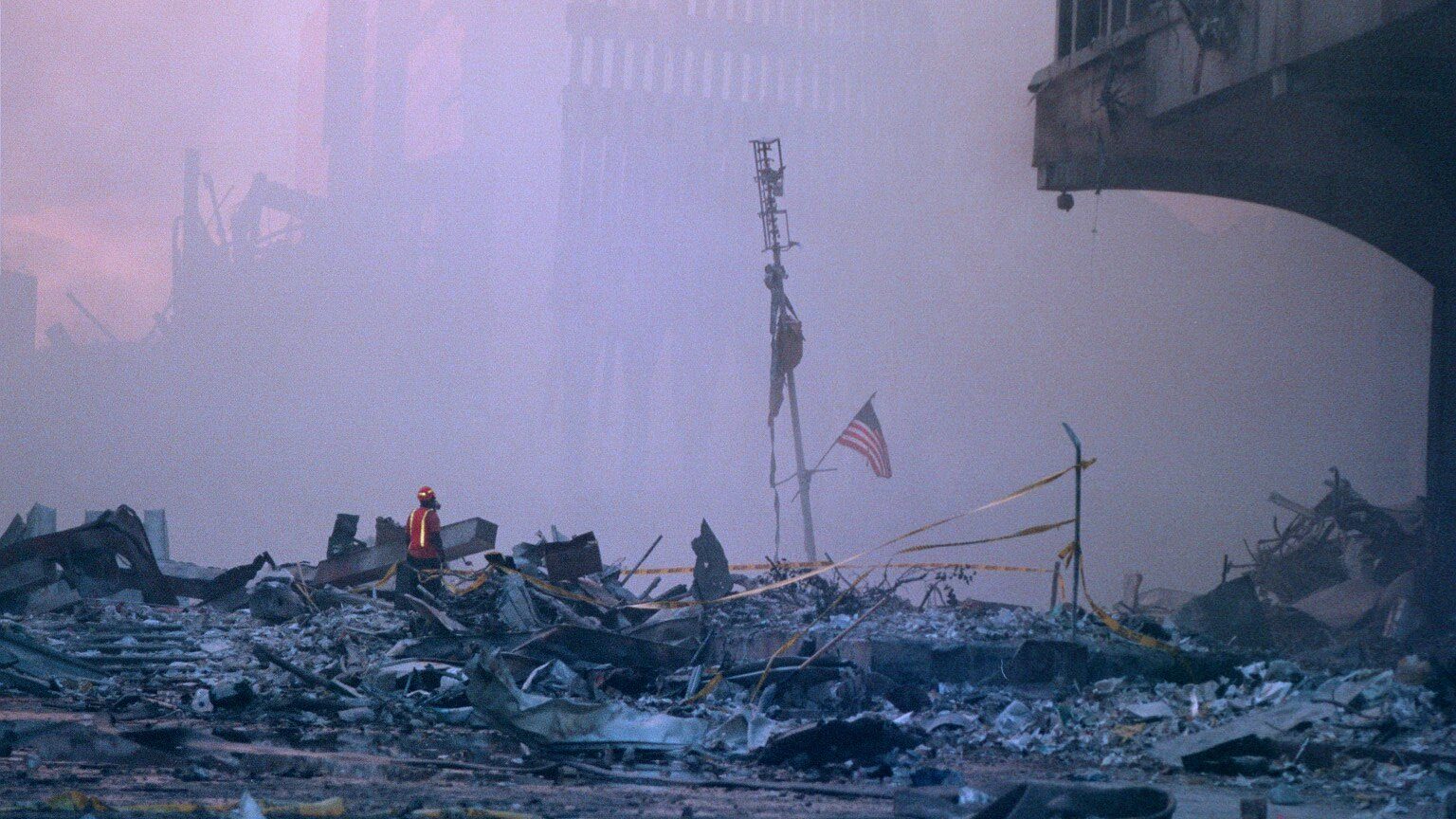Each Gallery Represents 1-2 days at Ground Zero, in roughly chronological order
(high-resolution photos are available for free upon request; you just have to make a donation to any 9/11-related charity & agree to give me photo credits & post a link to this site if you republish any photo)
Hi, this is Emil Chynn, thanks for visiting my page of some of the archived pictures I took at Ground Zero during my time spent there as a volunteer. This is my brief story:
I headed down to volunteer when I saw the towers burning, because I had been an intern at St. Vincent’s Hospital 8 years earlier, the 1st time the Twin Towers were attacked by a truck bomb. They told all the doctors on-call in the hospital to not go home, so we all waited to receive the 1st victims. However, that took about 5 hours because of a long time lag doing triage at the scene. Therefore, this time I told myself, “I would be much more useful if I just went there directly” and so I did. All public transportation was shut down, thousands of people were streaming north, & I couldn’t pay a cab enough $ to head to WTC. So I fed and walked my corgi, Hershey, strapped on my rollerblades, and headed downtown.
Below Canal Street, debris was starting to fill the streets, and below Chambers it got so deep (over an inch thick) that I had to take off my rollerblades as they got stuck. (I hid them in a burnt out firetruck to reclaim later, which in itself was scary, as you don’t expect to see rescue vehicles themselves destroyed. 2 days later, after volunteering on-site for over 24 hours, I returned and they were still there inside the cab).
When I got further downtown, there was so much dust & smoke in the air that a bright, sunny September day (I still remember it started out as a perfect fall day) had turned into 1st dusk, and then something resembling night. The smoke was acrid and bitter–it smelled like burning rubber, and something else burning that I didn’t recognize (this turned out to be burning metals; normally nothing gets so hot to burn metals). The only people around were cops, firefighters, and FBI. Remember: this was before anyone knew what was going on, before any organized rescue effort was mounted, before anyone from FEMA showed up–it was just a bunch or stunned New Yorkers, trying to help out.
Eventually, I ran into 1 or 2 other healthcare professionals who had also bravely decided to go downtown when everyone else was running uptown–there was this blonde female nurse, and EMS worker, and another person who did PT or OT (I forget which). We naturally grouped together, looking for the Twin Towers. But we couldn’t find them, even though we kept walking around, and were all New Yorkers. It was really strange, post-apocalyptic, and disorienting–how could we not see the towers in the skyline?
Finally, one of the others (I think it was the EMS guy) pointed to a pile of smoking debris, and said, “Hey, guys, I think that might be it!” The rest of us scoffed, and I said, “No way–even if the towers collapsed, they’d be lying over a few blocks, or hundreds of feet high–that pile can’t be more than 2 stories tall.” Remember, most street signs had been demolished, and you couldn’t see more than a dozen feet because of all the soot.
Eventually, we all came to realize that he was right, that the tallest buildings in the world were gone, that they had collapsed into a not-very-tall debris pile, and that meant that most of the people inside were probably dead, crushed into dust and ash–including, probably, some of the ash we were breathing in (by now all of us had mild coughs, as none of us had thought to bring a mask).
Later that afternoon, I directed another volunteer who was a construction worker to clear a path to the Brooks Brothers (he hotwired a small Bobcat from his construction site), where I set up the 1st Triage Center. I had been in contact with the NYFD Battalion Chief (or one of the remaining ones who hadn’t perished that day), who told me he would not send in any ambulances until I confirmed we had a safe path cleared, and some semi-secured place to receive both the ambulances and any victims. After 1-2 hours of scrounging around enough First Aid materials that the cops and firefighters had and we could find in the security station of the building, I gave the word, and about a dozen ambulances arrived, sirens blaring.
Unfortunately, that rush was short-lived. Over the next 2-3 hours, we medical personnel waited for the cops and firefighters frantically digging through what would quickly become known as “The Pile” to come with some injured people. But nobody came. Every 20 or 30 minutes an airhorn would sound, and everyone would come to a stop so rescue workers with dogs could listen more carefully to some faint sound. But in every case, it was a false alarm. I never saw a single victim rescued from inside the pile–they had all turned into dust, ashes to ashes, dust to dust, like in the bible, but in a terrible, unthinkably horrible way.
